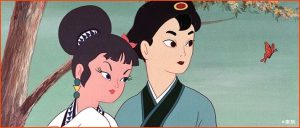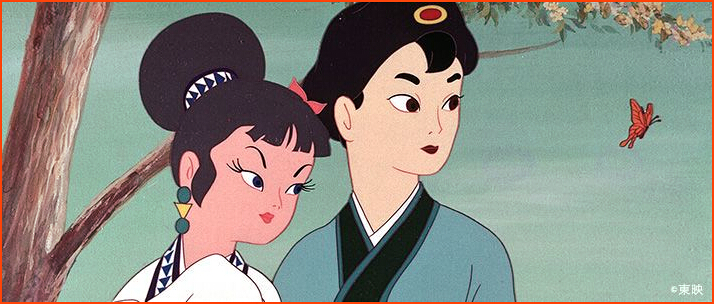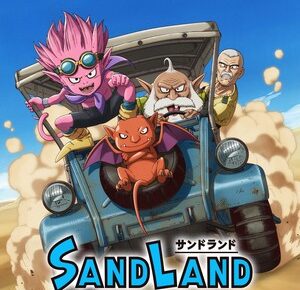
The Dawn of Japanese Anime
Japan started delivering activity in 1917 still the period of quiet movies through experimentation drawing and pattern liveliness procedures, in light of energized shorts from France and the United States. Individuals began discussing the great of Japanese manga movies. But Japanese anime were costlier to deliver than Western movements and were eclipsed by the fame of Disney kid’s shows. They confronted a difficult task from the beginning.
Something that caused them discovers their specialty was anime creation for advertising and exposure crusades by open foundations. Homegrown anime creation was starting to build up a little however strong establishment when Tokyo and the encompassing region endured disastrous harm in the Great Kantō Earthquake in 1923. The anime business had to begin once again without any preparation.
The business kept on battling, incapable to react enough to progressive developments, remembering the presence of the principal talkies for 1929 and shading film in 1932. During this period, Ōfuji Noburō won global praise for Bagudajō no tōzoku The Thief of Baguda Castle, which he made by reordering chiyogami Japanese shaded paper. His film is recognized as the first to make its quality felt outside Japan.
Numerous other promising anime craftsmen seemed consistently, yet with war drawing closer, products were in incredibly short inventory as the public state of mind turned aggressive. Indeed, even film was difficult to get hold of. It was in this setting that the primary full-length dramatic film throughout the entire existence of Japanese anime was delivered. Momotarō: Umi no shinpei (Momotarō’s Divine Sea Warriors, B&W, 74 minutes), created by the naval force, came out not long before the finish of the conflict. This was a propagandistic film intended to lift confidence and obligation to the conflict exertion.
Not long after the conflict finished, the General Headquarters of the Allied occupation (GHQ) united 100 anime craftsmen in the besieged out remains of Tokyo to shape the Shin Nihon Dōgasha, or New Japan Animation Company. The point was to make it simpler to spread occupation arrangements by having the craftsmen produce anime in commendation of popular government. In any case, large numbers of the specialists were savagely free and regional, and the organization was riven by conflicts from the start. The task wandered off base, and in the long run disbanded. Indeed, even GHQ quit. It appeared to be the change from militarism to vote based system was not going to be so natural.
The Start of Tōei Dōga (Now Tōei Animation)
It was during these years, as Japan recuperated from the awful conflict, that Ōkawa Hiroshi, leader of the Tōei film organization, saw Disney’s Snow White (1937). He was overpowered by the ravishing shade of the film. In 1956, he constructed a cutting edge studio a white-walled castle with cooling, as individuals called it and established Tōei Dōga (presently Tōei Animation). His aspiration: to turn into the Disney of the East.
Tōei Dōga picked Hakujaden (The Legend of the White Snake) as their first film. They sent a research group to the United States and welcomed a few specialists to go to Japan as guides. Thus, they had the option to dominate the Disney arrangement of sequential construction system creation. They recruited a group of new workers who sharpened their abilities while they delivered the film under the management of veteran artists like Mori Yasuji and Daikuhara Akira.
With occupations difficult to find in the after war Japan, the new organization had the option to draw in an extraordinary group of youthful ability glad to work for moderately low beginning compensations. It was a normal work escalated organization. In any case, as the public authority’s drive to twofold individuals’ livelihoods began to produce results, compensation shot up and the organization before long wound up in the red. Attendances at the World Masterpiece Fairy Tale Anime Series, a manga celebration held each year during the springtime school occasions and, in later years, throughout the late spring get-away too, were falling. The organization’s monetary future was unsure. The work development was likewise acquiring force, bringing incessant work questions and works the board conflicts. Takahata Isao and Miyazaki Hayao, presently with Studio Ghibli, started their professions at Tōei Dōga (Takahata entered the organization in 1959, Miyazaki in 1963). Both were dynamic individuals from the worker’s organization, Takahata filling in as bad habit director and Miyazaki as secretary-general.
Tetsuwan Atomu: The First Japanese Television Anime
On January 1, 1963, Fuji Television broadcast a 30-minute energized TV series called Tetsuwan Atomu (better referred to in English as Astro Boy). The show turned into an unexpected hit, beginning an anime blast and a time of extraordinary rivalry for TV crowds. The achievement denoted the start of another sort of anime industry.
The low franchise charges paid to the studio for Tetsuwan Atomu made by Tezuka Osamu, the leader of Mushi Production implied that the organization expected to think of an approach to definitely reduce creation expenses. They heartlessly cut the quantity of drawings, managed the quantity of lines in each picture to the absolute minimum, and took to utilizing all the more actually pictures. They attempted to make the storylines snappier and contrived sharp methods of reenacting development, from audio cues to the discourse.
The organization counterbalances its misfortunes with copyright pay permitting the rights for the Atom character to their corporate support, confectionary producer Meiji Seika, who utilized the character on a well known brand of chocolates. At the point when the organization actually posted a misfortune, Tezuka chose to contribute his own pay from manga distributing. It was a liberal signal runs of the mill of the man they called the divine force of manga.
The Wilderness Years and the Appearance of a Blockbuster
Promoting got settled in as a component of the fundamental plan of action for all the TV anime that followed. The most famous sort managed sci-fi and space, trailed by shows about young ladies with enchanted forces. In 1968, the famous baseball-themed Kyojin no hoshi (Star of the Giants) started, continued in 1969 by the main episode of the family show Sazae-san, which proceeds right up ’til the present time as the longest-running series in anime history. Yet, few out of every odd series could be a victor, and with an overabundance available rivalry increased.
At Tōei Dōga, which kept on running a deficiency because of high creation costs, work the board relations disintegrated, prompting a lockout and cutbacks in the mid year of 1972. Mushi Production failed in 1973 albeit the worker’s organization later took over from Tezuka, the author, and has driven the organization until the current day. The anime business went into downturn. Behind this downturn were bigger monetary issues, for example, the Nixon Shock in 1971 and the 1973 oil emergency.
At the point when an energized TV series finished, the staff was disbanded. Tōei’s rank based business framework self-destructed, and they changed to an arrangement of execution based compensation. They were needed to change to a corporate style that was more viable with the insightful programming approaches of TV channels.
In the midst of the recessionary state of mind of these distressing years, another work created the impression that tested the possibility of anime as essentially youngsters’ diversion. Uchū senkan Yamato (Space Battleship Yamato), delivered as a TV series in 1974 and a component film in 1977, turned into a social wonder, hugely famous with a large number of youthful grown-ups.
The Proliferation of Japanimation Fans
In the mean time, Japanese TV anime started to get well known among youngsters abroad. In certain nations, grown-ups dismissed it, calling it Japanimation and condemning it as modest, rough, and explicitly unequivocal. At the point when kyandi (Candy) was communicated in France, little youngsters were stuck to the TV screen. A few guardians despised this, asserting their youngsters were being debased by a peculiar culture from the Orient. All things considered, the anime fan base keeps on developing around the planet, for the most part among youngsters. A few fans even marvel, “For what reason can’t our nation make works that outperform Japanimation?” Today, Japanimation signifies something very not quite the same as the negative undertones it used to have.
Albeit the quantity of TV anime steadily recuperated after the breakdown of the air pocket economy in 1992 and the financial droop of the 1990s, the business all in all has never recuperated the grandeur of its brilliant years. A drop in promoting income, decreasing birthrates, and the prominence of elective types of amusement like computer games and phones have prompted drowsy ideal time appraisals and a decrease in the quantity of anime since the top in 2006. Despite the fact that there are less anime on the primary business stations today, different stations have remained anime-accommodating: TV Tokyo boss among them, trailed by neighborhood and territorial stations, satellite stations, and other correspondence frameworks. Sadly, these more modest channels will in general have more modest spending plans than the principle stations, with unsurprising ramifications for creation costs.
The Japanese anime industry is at a defining moment. Actually numerous anime creation organizations are battling, and have gotten minimal more than subcontractors for TV slots. The need to improve the situation with these organizations is premier among the numerous issues that should be tended to if the business is to keep on growing new ability for what’s to come.



